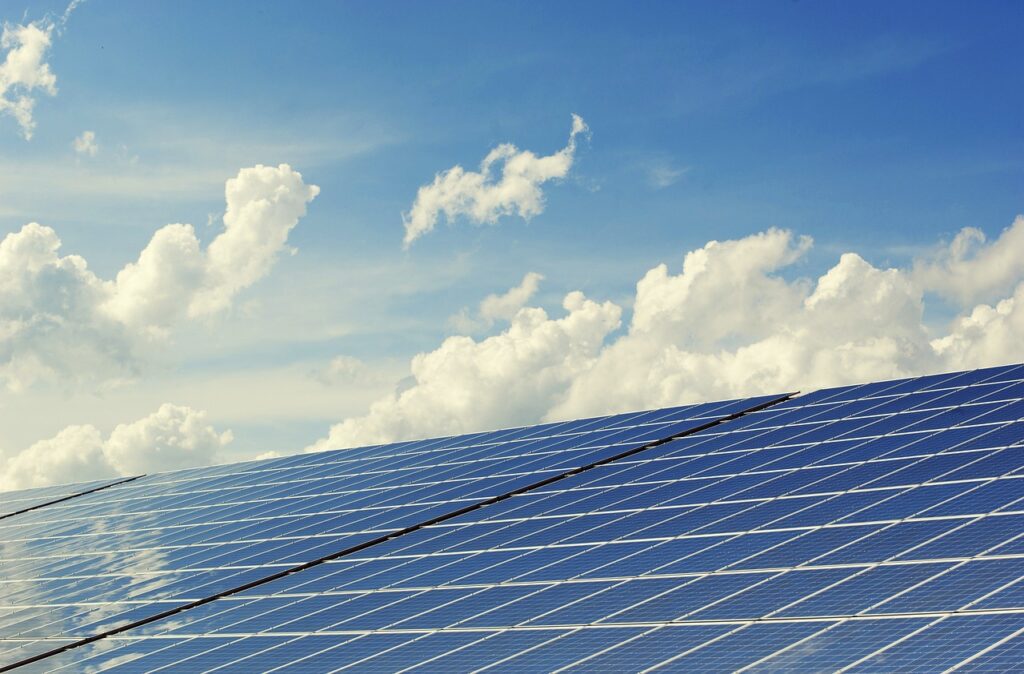"Unlocking Potential: Solar Panel Systems Explained"
Reduce your electricity bill up to 80%!
Introduction
In the era of sustainable energy solutions, solar panel systems have emerged as a leading technology in the quest for renewable power sources. Harnessing the abundant energy of the sun, solar panel systems offer a clean and efficient way to generate electricity for homes, businesses, and communities. This blog aims to provide a comprehensive understanding of solar panel systems, exploring their components, functionality, benefits, and potential for shaping a greener future.
Understanding Solar Panel Systems
Solar panel systems, also known as photovoltaic (PV) systems, consist of interconnected solar panels that convert sunlight into electricity through the photovoltaic effect. The key components of a solar panel system include:
1. Solar Panels: These are the most visible components of the system, consisting of individual solar cells made from semiconductor materials such as silicon. When exposed to sunlight, the solar cells generate direct current (DC) electricity.
2. Inverter: The DC electricity produced by the solar panels is converted into alternating current (AC) electricity, which is suitable for use in homes and businesses, by the inverter.
3. Mounting Structure: Solar panels are typically mounted on rooftops or ground-mounted structures to optimize sun exposure. The mounting structure ensures the panels are securely installed and positioned at the optimal angle for maximum sunlight absorption.
4. Racking and Wiring: Racking systems support the solar panels and provide the framework for the mounting structure. Wiring connects the solar panels to the inverter and other electrical components of the system.
How Solar Panel Systems Work
Solar panel systems work by capturing sunlight and converting it into usable electricity through the following process:
1. Sunlight Absorption: Solar panels absorb sunlight, which consists of photons (particles of light) that strike the surface of the solar cells.
2. Photovoltaic Effect: When photons interact with the semiconductor material in the solar cells, they knock electrons loose from the atoms, generating an electric current. This phenomenon is known as the photovoltaic effect.
3. Electricity Generation: The electric current produced by the solar cells is in the form of direct current (DC) electricity, which flows through the wiring and into the inverter.
4. Conversion to Alternating Current (AC): The inverter converts the DC electricity into alternating current (AC) electricity, which matches the standard electrical supply used in homes and businesses.
5. Utilization of Electricity: The AC electricity generated by the solar panel system can be used to power appliances, lights, and other electrical devices in the building. Any excess electricity can be fed back into the grid or stored in batteries for later use.
Benefits of Solar Panel Systems
Solar panel systems offer numerous benefits for homeowners, businesses, and the environment:
1. Clean and Renewable Energy: Solar panel systems produce electricity without emitting greenhouse gases or other pollutants, making them an environmentally friendly alternative to fossil fuels.
2. Cost Savings: By generating their own electricity, solar panel system owners can reduce or eliminate their dependence on utility companies, leading to significant cost savings on energy bills over time.
3. Energy Independence: Solar panel systems provide a source of energy that is independent of external factors such as fuel prices or power outages, increasing resilience and reliability.
4. Reduced Carbon Footprint: By utilizing solar energy, individuals and businesses can significantly reduce their carbon footprint and contribute to mitigating climate change.
5. Increased Property Value: Homes and businesses equipped with solar panel systems often see an increase in property value due to their lower operating costs and eco-friendly features.
6. Government Incentives: Many governments offer incentives, rebates, and tax credits to encourage the adoption of solar energy, making solar panel systems more affordable and accessible.
Conclusion
Solar panel systems are a versatile and sustainable solution for generating electricity from sunlight. By harnessing the power of the sun, these systems offer clean, renewable energy that can reduce energy costs, increase energy independence, and contribute to a greener planet. Whether installed on rooftops or ground-mounted structures, solar panel systems have the potential to revolutionize the way we power our homes, businesses, and communities. As technology continues to advance and costs decline, solar panel systems will play an increasingly vital role in shaping a more sustainable and resilient future for generations to come.



Attractive section of content. I just stumbled upon your web site
and in accession capital to assert that I acquire in fact enjoyed account your blog posts.
Any way I’ll be subscribing to your augment aand even I achievement yyou access consistently rapidly. https://zeleniymis.com.ua/
Attractive section of content. I just stumbled upon your website and in accession capital to assert that I have, in fact, enjoyed your blog posts. Anyway, I’ll be subscribing to your updates and even achieving access consistently and rapidly.
Thank you so much for your kind feedback! I’m really glad to hear that you enjoyed the content and found it valuable. Your support means a lot, and I’m thrilled to have you as a subscriber. Feel free to stay connected, and if you ever have any questions or suggestions, don’t hesitate to reach out. Looking forward to sharing more with you consistently! 😊